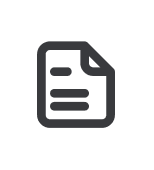You can use wizard to create your reports. If you haven’t yet, sign in to the app as an administrator.
- Follow this link to complete the steps in product

- Select Create new report and the report type, then select Create.
Note: If you select a blank report, you'll see the following options:- Start by report creation wizard: This lets you search for the specific report type.
- Start by adding data columns: This lets you manually add, remove, and drag the columns to reorder.
- Quickly select the report name twice to edit the name of your report.
Organise columns in your report
Add, remove, and reorder the columns in your report.
- Follow this link to complete the steps in product

- Open your report, then select Columns to view your report list.
- In the Reorder tab, you can drag the columns in the order you want.
- In the More Columns tab, select or uncheck the checkbox you want to add or remove.
- Some fields are unavailable. If you use custom fields, you’ll see it in the list.
- Select Save As or Save. This lets you edit your report any time in the Report name field.
- Select Save to save the report.
Filter items in your report
Show the items you want to see in your report.
- Follow this link to complete the steps in product

- Open your report, then select
 Filter.
Filter. - In the ▼ dropdown, select or enter the type of data you want to filter by.
- Select the operation you want to see in your report.
- Once done, you can select from the provided values.
Tip: You can also add a condition or add another filter. To do this, select + Add condition or + Add another filter.
Group by items in your report
Find your report data easier. You can expand or collapse it to view the details in each group.
- Select Group by to categorise line items by any columns. You can select up to 3 columns to group data.
- Select Edit group calculations ▼ dropdown to calculate total, average, or percentage for numeric groups.
Pivot your report
Summarise and total your report data. Here’s how.
- Follow this link to complete the steps in product

- Open your report, then select Pivot.
- Select the fields to categorise in the Rows and Columns, then select Values* to summarise.
- Select Show totals checkbox to view the total amount in the rows and columns.
- Turn off Show pivot table to return to the original view.
Use General options
Customise your report and update the accounting method to compare the results with the use of General options.
- Number format ▼ dropdown — shows the numbers in thousands, cents, and displays zero amounts or currency symbols in your report. You can also choose to show decimals up to 3 places, or round to the nearest whole number.
- Header or Footer ▼ dropdown — lets you select or uncheck the checkbox you want to add or remove.
- Column configurations ▼ dropdown — lets you turn on Show entity names in the columns.
- Row settings and Column settings▼ dropdowns — lets you select a banded row colour, or a colour for selected columns on your report.
- Gridlines ▼ dropdown — lets you select borders for your report, such as vertical and horizontal borders.
Tip: Set your report period and select your custom date. You can also refresh your data with this icon  to update.
to update.
Use View options
 View options — lets you select a view style which affects text size, spacing, and font. You can also expand or collapse all of your report data here.
View options — lets you select a view style which affects text size, spacing, and font. You can also expand or collapse all of your report data here.
 in your report title, you can view and edit the Standard Report using the new modern view report experience.
in your report title, you can view and edit the Standard Report using the new modern view report experience.